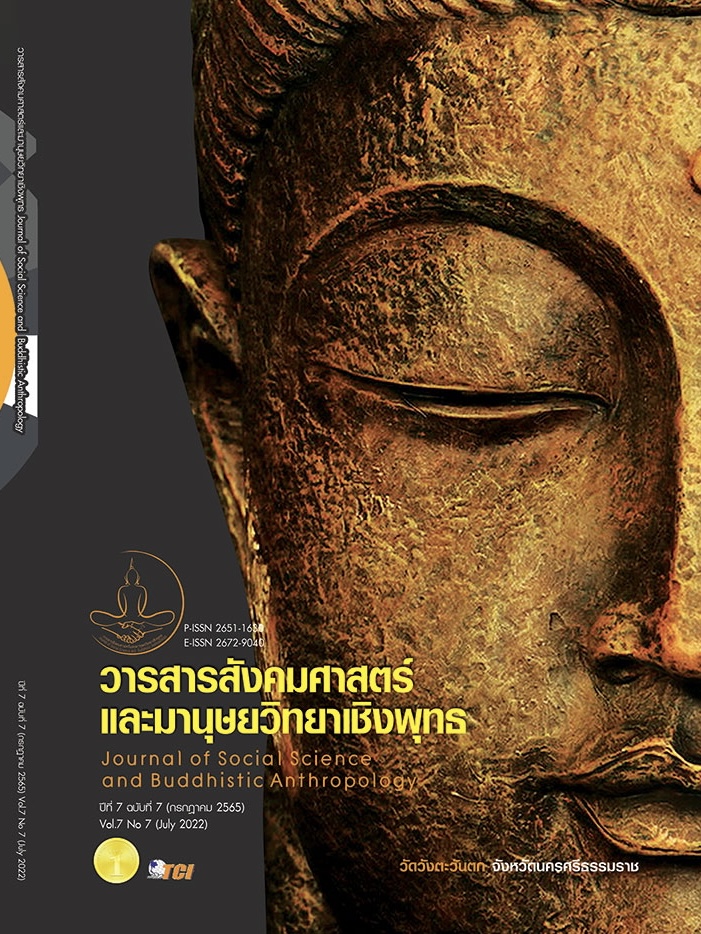POWER OF TEST UNDER THE CONDITION OF DIFFERENT SAMPLE SIZES, LEVELS OF SIGNIFICANCE, AND DATA TYPES
Keywords:
Power of t - test, Sample Size, Level of Statistical Significance, Data Type, Monte Carlo Simulation TechniqueAbstract
The objectives of this research article were to: 1) study the testing power of the t-test under sample size conditions, statistical significance level, and different types of data; and 2) to compare the test power and to study the interactions between the three conditions variables. The research was conducted by creating three datasets of 18,000 (9,000 pairs) and examining the properties of the normality distribution. All data were taken for testing at the statistical significance level of .001, .01, and .05, and the power of test was obtained from 27,000 t - tests pairs. The experimental model used in this research was a 3 - factor factorial experimental plan. The results showed that the three data types are real data, transformed data, and data from the Monte Carlo technique; at the sample sizes of 30, 60, and 90, the power of the t-test was higher, respectively, in all statistical significance levels 001, .01, and .05. As the level of statistical significance increases, the set of test power values tends to be normality distribution. Moreover, the statistical significance level, sample size, and data type had a statistically significant effect on the power of the t - test. It was found that the power of the test at the statistical significance level of .05 was the highest average. The power of the test at the sample size 60 was significantly highest. The power of the test from the Monte-Carlo technique had the highest average. There was an interaction between the sample size and the statistical significance level, interaction between the sample size and the data type, interaction between the statistical significance level and the data type, and interaction between statistically significant levels, sample size, and data type that had a statistically significant effected on the power of test.
References
งามพิศ ชัยสงคราม. (2548). การเปรียบเทียบอำนาจของการทดสอบเทียบความกลมกลืนสำหรับตัวแบบการถดถอยเชิงเส้นพหุคูณ. ใน วิทยานิพนธ์วิทยาศาสตรมหาบัณฑิต สาขาพาณิชยศาสตร์และการบัญชี. จุฬาลงกรณ์มหาวิทยาลัย.
ชนิกานต์ ทีพารัตน์. (2555). Monte Carlo Method. รายงาน Seminar in Computer Engineering วิศวกรรมคอมพิวเตอร์. ปทุมธานี: มหาวิทยาลัยรังสิต.
สมกิต วงศ์มาก. (2549). การศึกษาอำนาจการทดสอบของการวิเคราะห์ความแปรปรวนแบบทางเดียวภายหลังการแปลงข้อมูลจากกลุ่มตัวอย่างขนาดเล็ก โดยใช้เทคนิคการจำลองแบบมอนติคาร์โล และการใช้ข้อมูลจริง. ใน การศึกษามหาบัณฑิต สาขาวิชาการวิจัยและสถิติทางการศกษา. มหาวิทยาลัยศรีนครินทรวิโรฒ ประสานมิตร.
สุพรรณี อึ้งปัญสัตวงศ์. (2541). แนวคิดเกี่ยวกับการเปรียบเทียบสถิติทดสอบโดยใช้การจำลองแบบปัญหาด้วยเทคนิคมอนติคาร์โล. วารสารวิทยาศาสตร์ มข, 26(1), 7-11.
Chakrapani C. (2011). tatistical reasoning vs. magical thinking. VUE, April, 16-18. Retrieved Mart 3, 2019, from https://issuu.com/mria-arim/docs/vue-apr-2011
Drezner, Z. et al. (2008). A Modified Kolmogorov-Smirnov Test for Normality. University Library of Munich. Germany: MPRA Paper.
Hays, W. L. (1994). Statistics. 5th Edition, Harcourt Brace College Publishers. Fort Worth: Recently Published Papers.
Hesterberg, T. (2008). It's Time To Retire the "n >= 30" Rule, Proceedings of the American Statistical Association, Statistical Computing Section (CD-ROM). Retrieved Mart 18, 2021, from http://www.timhesterberg.net/articles/JSM08-n30.pdf
Howell, C. (1992). Statistic Method for Psychology. 3rd ed. Belmont, CA: Duxbury Pr.
Kar, S.S. & Ramalingam, A. (2013). IS 30 THE MAGIC NUMBER? ISSUES IN SAMPLE SIZE ESTIMATION. National Journal of Community Medicine, 4(1), 175-179.
Kirk, R. E. (1995). Experimental Design: Procedures for the Behavioral Science. 3rd ed. California: Brooks/Cole.
Lavrakas, P. J. (2008). Encyclopedia of survey research methods (Vols. 1-0). Thousand Oaks: Sage Publications.
Martínez - Abraín, A. (2014). Is the 'n = 30 rule of thumb' of ecological field studies reliable? A call for greater attention to the variability in our data. Animal Biodiversity and Conservation, 37(1), 95-100.
Mauro, J. (2021). Monte Carlo Techniques. Retrieved Mart 18, 2021, from https://www.amazon.com/Materials-Kinetics-Transport-Rate-Phenomena /dp/0128239077
Schultz, R. L., & Sullivan, E. M. (1972). On the Use of Computer Simulation for Research: Comment. Simulation & Games, 3(1), 107-110.
Downloads
Published
How to Cite
Issue
Section
License
Copyright (c) 2022 Journal of Social Science and Buddhistic Anthropology

This work is licensed under a Creative Commons Attribution-NonCommercial-NoDerivatives 4.0 International License.








